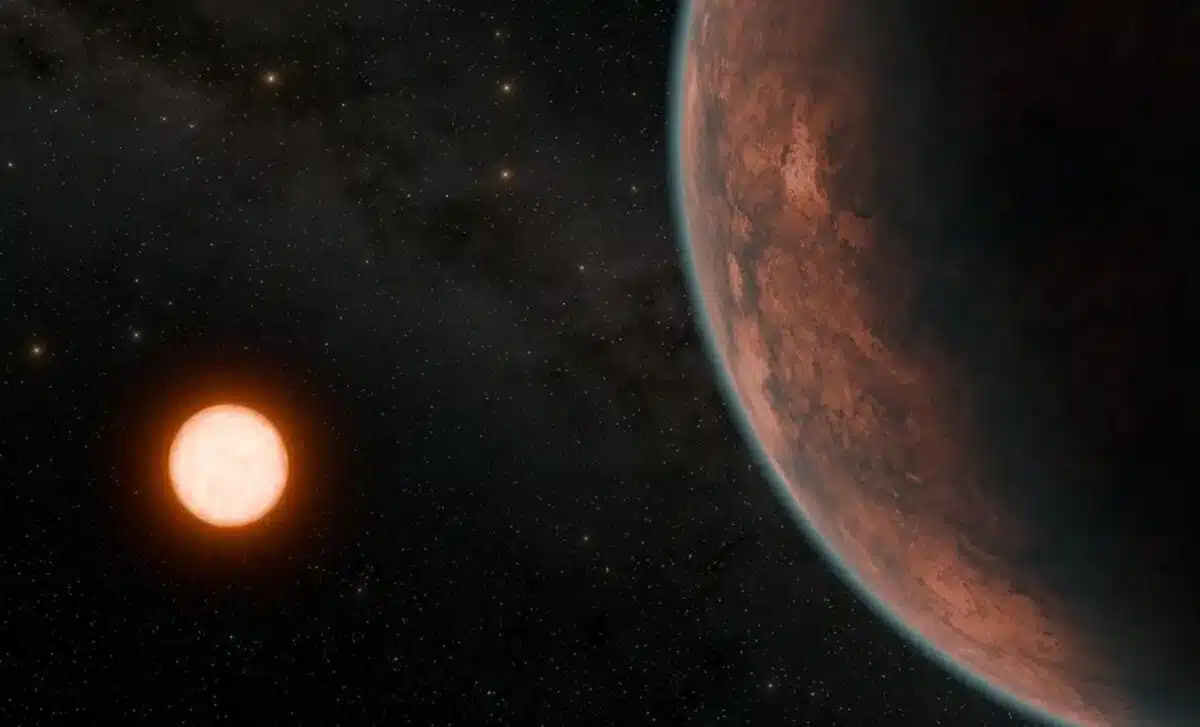
Published on May 23, 2024 11:53 By Lydia Amazouz
Collected at : https://dailygalaxy.com/2024/05/potentially-habitable-exoplanet-gliese-12b/
Astronomers have identified a potentially habitable exoplanet, Gliese 12b, located in the habitable zone of its parent star, Gliese 12.
This discovery raises exciting possibilities about the existence of life beyond our solar system. The characteristics of this planet suggest that it could potentially support life, making it a significant find in the ongoing search for extraterrestrial habitats.
Characteristics of the Potentially Habitable Exoplanet Gliese 12b
Gliese 12b is an exoplanet with a size and composition similar to Venus, but with a more moderate temperature. This “Exo-Venus” orbits within the habitable zone, where conditions might be suitable for liquid water to exist. Unlike Venus, which has a scorching surface due to its thick atmosphere, Gliese 12b’s moderate temperature suggests it could potentially support life.
The planet’s position in its star’s habitable zone means it receives just the right amount of starlight to maintain liquid water, assuming a suitable atmosphere.

The exoplanet’s surface conditions and atmospheric composition are crucial factors in determining its habitability. If Gliese 12b has a thick atmosphere like Venus, it could trap heat and create a runaway greenhouse effect. However, if its atmosphere is thinner or more similar to Earth’s, it could maintain more temperate conditions, conducive to life.
Significance of the Discovery
The discovery of Gliese 12b is significant for several reasons:
- Habitable Zone: Being in the habitable zone of its star increases the likelihood of conditions suitable for life.
- Moderate Temperature: Unlike Venus, Gliese 12b’s moderate temperature could allow for liquid water, a key ingredient for life.
- Research Opportunities: This exoplanet provides a valuable target for future research and observation, helping astronomers understand more about planet formation and the potential for life beyond Earth.
Finding a planet in the habitable zone of its star is a rare and exciting event. It provides a unique opportunity to study an exoplanet that might have conditions similar to those on Earth. This discovery also adds to the growing list of potentially habitable exoplanets, which are prime targets for future missions and telescopic observations.
Methods of Discovery
Gliese 12b was discovered using the transit method, which involves detecting dips in a star’s brightness as a planet passes in front of it. This method allows scientists to determine the planet’s size and orbit. Additionally, radial velocity measurements, which track the star’s wobble caused by the gravitational pull of the planet, provide information about the planet’s mass.
These combined methods give a comprehensive picture of the planet’s characteristics, including its size, mass, and orbital period. Advanced telescopes and instruments, such as those on the James Webb Space Telescope (JWST), will further study Gliese 12b’s atmosphere and surface conditions.
Future Research
Further studies of Gliese 12b will focus on its atmosphere, surface conditions, and potential signs of life. Space telescopes like the JWST will play a crucial role in observing this exoplanet in more detail. Understanding its atmospheric composition and climate will provide insights into its habitability.
Future missions might involve direct imaging of the planet, which could reveal surface features and further details about its atmosphere. Spectroscopic analysis will be essential for detecting gases such as oxygen, methane, and carbon dioxide, which are potential biosignatures.
Potential for Life
The potential for life on Gliese 12b hinges on several factors, including the planet’s atmospheric composition, surface temperature, and the presence of liquid water. If the planet has a stable climate and the right chemical ingredients, it could support microbial life or even more complex organisms.
The discovery of Gliese 12b also fuels the debate about the prevalence of life in the universe. If life can exist on a planet with conditions similar to those on Earth, it increases the likelihood that life could be common in the universe.
Comparative Planetology
Studying Gliese 12b in comparison with Venus and Earth will enhance our understanding of planetary climates and atmospheres. Venus, often considered Earth’s twin due to its similar size and composition, has a vastly different climate. By comparing these planets, scientists can learn more about the factors that make a planet habitable or inhospitable.
This comparative approach will help refine models of planetary formation and evolution, providing insights into how different planetary systems develop. It will also aid in identifying which exoplanets are most likely to host life, guiding future explorations.

Leave a Reply